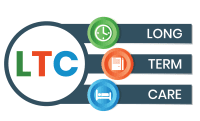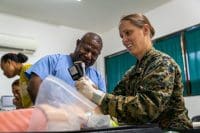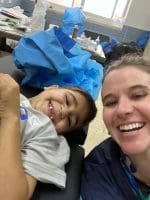ASH guidelines provide evidence-based recommendations.
While an average 75-year-old in the United States can expect to live another dozen years, life expectancy for those with acute myeloid leukemia (AML) often is measured in months, according to American Society of Hematology (ASH) guidelines authors.
To address the poor prognosis associated with AML in older patients, the ASH 2020 Guidelines for Treating Newly Diagnosed Acute Myeloid Leukemia in Older Adults asked 6 critical questions about management of these patients and provided evidence-based recommendations to help answer them.
Published in Blood Advances in 2020, the ASH guidelines are designed to help professionals make decisions about diagnostic and treatment alternatives that are optimal for this vulnerable patient population.
GRADE approach to assessment
The guidelines were developed by a multidisciplinary panel with support from the McMaster Grading of Recommendations Assessment, Development and Evaluation (GRADE) Centre. The panel used the GRADE approach, including GRADE’s Evidence-to-Decision frameworks, to assess evidence and make recommendations.
To support patient management of older adults with AML, the ASH panel made its recommendations based on questions regarding the decision to pursue antileukemic treatment vs best supportive management, intensity of therapy, role and duration of postremission therapy, use of combination therapy vs monotherapy for induction, duration of less-intensive therapy, and role of transfusion support for patients no longer receiving antileukemic therapy.
Following are brief summaries of the critical questions and recommendations for treatment of older adults with newly diagnosed AML:
Question 1: Should patients who are candidates for antileukemic therapy be offered antileukemic therapy instead of best supportive care only?
- Evidence: The risk of death for patients who receive intensive antileukemic therapy may be lower than that for those who receive best supportive care.
- Conclusion: There is a net benefit of antileukemic therapy over best supportive care in older adults with AML who are candidates for therapy.
- Recommendation: Offer antileukemic therapy over best supportive care (strong recommendation based on moderate certainty in the evidence of effects).
- Comments: The data confirm what many practitioners know from experience: If the goal is prolongation of life, any therapy is better than no therapy.
Question 2: Should patients who are considered candidates for antileukemic therapy receive intensive antileukemic therapy vs less–intensive antileukemic therapy?
- Evidence: Over time, patients who receive intensive antileukemic therapy may be at lower risk for death than those who receive less-intensive antileukemic therapy. The risk of death may lower at 1 year. Patients who receive intensive antileukemic therapy are 6.6 times more likely to receive allogeneic hematopoietic stem cell transplantation (allo-HSCT). Counterintuitively, those who receive more-intensive therapy may be less likely to have pneumonia, up to 2 years.
- Conclusion: There may be a net benefit of intensive antileukemic therapy over less-intensive antileukemic therapy.
- Recommendation: Favor intensive antileukemic therapy over less-intensive antileukemic therapy (conditional recommendation based on low certainty).
- Comments: Most patients probably value the uncertain benefits of intensive therapy more than the uncertain harms. Use of potentially more efficacious combination therapies that may be less intensive than traditional cytotoxic therapy could alter the panel’s conclusions.
Question 3: Should patients who achieve remission after at least 1 cycle of intensive antileukemic therapy receive postremission therapy vs no additional therapy?
- Evidence: Patients who receive 1 cycle of consolidation have lower mortality, a longer survival time by a median of 3 months, and a longer time to recurrence by a median of 1 month than those who do not receive consolidation.
- Conclusion: There may be a benefit of postremission therapy in patients who achieve remission after at least a single cycle of intensive antileukemic therapy.
- Recommendation: Postremission therapy is suggested over no additional therapy for patients who achieve remission after at least a single cycle of intensive antileukemic therapy and are not candidates for allo-HSCT (conditional recommendation based on low certainty in the evidence of effects).
- Comments: The evidence is not sufficient to make a recommendation for a specific number of cycles beyond 1 cycle. The best postremission strategy remains to be determined.
Question 4: Should patients considered appropriate for antileukemic therapy but not for intensive antileukemic therapy receive gemtuzumab ozogamicin, low–dose cytarabine, azacitidine, 5–day decitabine, or 10–day decitabine as monotherapy or in combination?
- Evidence: Patients who receive azacitidine monotherapy probably have a lower risk of death over time and a lower risk of death at 2 years than those who receive low-dose cytarabine monotherapy. Patients who receive low-dose cytarabine may have a lower risk of febrile neutropenia than those who receive a low-dose cytarabine combination.
- Conclusion: There is insufficient evidence of important benefits in choosing between hypomethylating agents and low-dose cytarabine and insufficient evidence that adding a secondary agent to any monotherapy results in an important benefit. Toxicity and expense need to be weighed when combination regimens are being considered.
- Recommendations: When choosing between hypomethylating-agent monotherapy and low-dose cytarabine monotherapy, use either option (conditional recommendation based on moderate certainty in the evidence of effects). Choose monotherapy with 1 of hypomethylating agents or low-dose cytarabine over a combination of 1 of these drugs with other agents (conditional recommendation based on low certainty in the evidence of effects).
- Comments: Hypomethylating agents and low-dose cytarabine are on a par with each other, although certain clinical situations might favor the use of 1 of the agents.
Question 5: Should patients who received less–intensive antileukemic therapy and who achieved a response continue therapy indefinitely until progression/toxicity or be given therapy for a finite number of cycles?
- Evidence: No comparative studies were found that address this question in older adults with AML. The panel used indirect evidence to inform judgments about desirable and undesirable effects.
- Conclusion: There is likely to be a net benefit of continuing therapy indefinitely until progression or unacceptable toxicity over stopping therapy.
- Recommendation: Continuing therapy indefinitely until progression or unacceptable toxicity over stopping therapy (conditional recommendation based on very low certainty in the evidence of effects).
- Comments: The recommendation places a high value on the potential benefits of survival when therapy is continued indefinitely.
Question 6: Should patients who are no longer receiving antileukemic therapy (including those receiving end-of-life or hospice care) receive red blood cell (RBC) transfusions, platelet transfusions, or both vs no transfusions?
- Evidence: No comparative studies were found that address this question. The panel decided to use indirect evidence.
- Conclusion: There is likely to be a net benefit of making RBC and platelet transfusions available to older adults with AML who are no longer receiving antileukemic therapy.
- Recommendation: Having RBC transfusions available over not having transfusions available (conditional recommendation based on very low certainty in the evidence of effects).
- Comments: The recommendation places high value on the potential benefits of RBC and platelet transfusions on health-related quality of life and on how important and beneficial patients and clinicians perceive the treatments to be.
Also recommended: shared decision-making
While offering recommendations regarding type and duration of treatments for newly diagnosed older patients with AML, the ASH guidelines encourage a shared decision-making process that involves ongoing discussions with patients to address care goals and the relative risk-benefit balance of treatment throughout the disease course .
References
Sekeres MA, Guyatt G, Abel G, et al. American Society of Hematology 2020 guidelines for treating newly diagnosed acute myeloid leukemia in older adults. Blood Adv. 2020;4(15):3528–3549. doi: 10.1182/bloodadvances.2020001920 (https://ashpublications.org/bloodadvances/article/4/15/3528/461693/American-Society-of-Hematology-2020-guidelines-for)


















